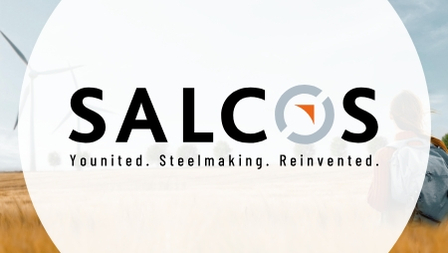Steel - safe, economical and sustainable
25.10.2018 | Salzgitter Flachstahl GmbH
New steel grades and innovative steel products are making cars not only safer, but also lighter and consequently more economical to drive. Salzgitter AG and its subsidiaries develop and deliver the appropriate products for this, and for a positive future of automobile manufacturing.
Thanks to its unique material characteristics, steel has proven its value as a material in automobile manufacturing. Steel is characterized by its strength, formability, joinability, and paintability, in addition to optimal recyclability. Without steel, affordable light-weight automobiles in large-scale production would be inconceivable. Consequently, the automotive industry and its suppliers rank as some of Salzgitter AG's most important customers.
The challenges here are diverse: With a focus on weight reduction, scope for design variety, and cost savings – while safety naturally also plays a major role. The design and construction of today's automobiles are far safer than those of cars from 25 years ago, which is also due to the increased use of high strength steel grades.
Depending on the requirement, steel products differ in their chemical composition, the production route (such as hot or combined hot and cold rolling), the mechanical properties, the surface coating, and the surface's fine structure.

In order to satisfy the special requirements in lightweight construction, high strength steel grades were developed in past decades that allow a reduction of the metal sheet thickness, while maintaining the same component strength. These high strength steel grades include, for example, the bake-hardening steels, which are relatively soft during the forming process and then obtain a higher yield strength during the stove enameling. As a result, they improve the dent resistance and are particularly suitable for body shell elements.

In addition to these widespread high strength steels, so-called advanced high strength steel (AHSS) grades have also been developed. These most notably include the multiphase steels such as dual-phase or TRIP steels. All multi-phase steels share a common characteristic, namely the energy absorption capacity that is extraordinary for the high strengths. The "ultra-high strength" manganese-boron steels, which are being increasingly utilized for bearing and safety-relevant structural elements that call for the highest resistance to deformation, offer even higher strengths.
One example for improved production processes due to optimized steels are the multi-phase steels with the term xpand® in their names. They enable the implementation of component functions with fewer component parts, for example. This guarantees customers a reliable adjustment of the manufacturing processes, also for critical forming steps. This is an important aspect as the level of geometric complexity for components in new lightweight solutions in automobile manufacturing is steadily increasing.

But steel is more than just a safe material - it is also a sustainable one for automobile manufacturing. Its life cycle assessment is significantly better than that for aluminum, magnesium and fiber-reinforced plastics. Steel also lends itself to "multi-recycling" - it can be reused any number of times without quality losses. A perfect cycle that can be optimized through measures such as the closed material loop with BMW: Salzgitter Flachstahl has been supplying BMW Group Presswerk Leipzig with steel coils since November 2017. The special trucks that are used carry all the pressing plant scrap that has accrued with them on the return trip to Salzgitter, ensuring that the trucks are always running at full capacity. A salient example that is surely setting a precedent.







